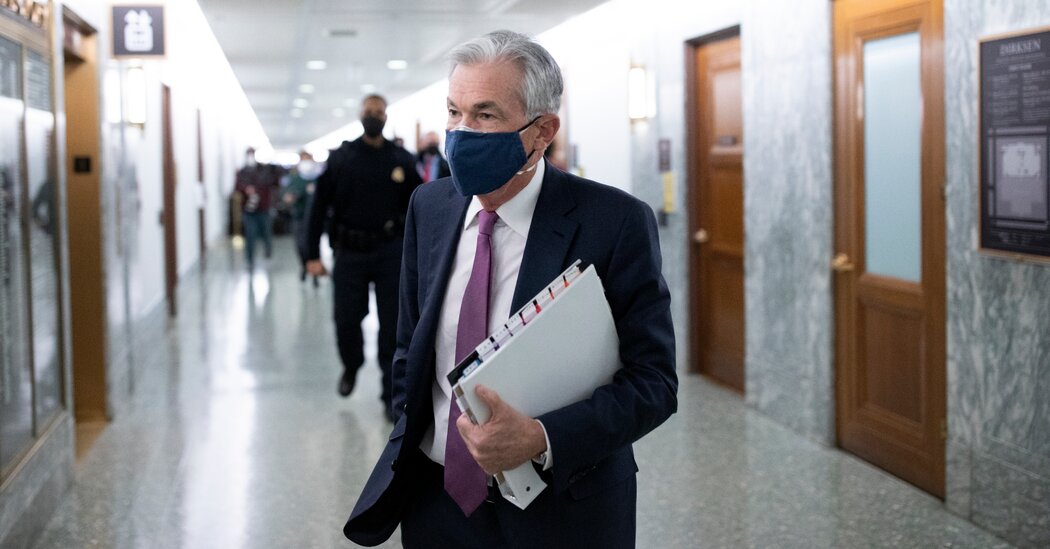Jerome H. Powell, the Federal Reserve chair, has compared setting monetary policy to stumbling through an unlit room: You feel your way to the door cautiously to avoid making a painful mistake.
The analogy is likely to ring especially true over the next few months as Omicron-jumbled data pours in, and the virus obscures the pace of economic progress and leaves policymakers in the dark. But the Fed may lack the luxury of creeping slowly through the dinginess this time.
That is why policymakers may have gotten a lucky break with the January jobs data. Hiring surprised forecasters, as employers reported adding 467,000 jobs instead of the lackluster 125,000 that analysts had expected amid the virus surge. Unemployment ticked up, but wage growth came in very strong — average hourly earnings were 5.7 percent higher than a year earlier, a full percentage point faster than economists had expected — which is likely to reinforce the Fed’s contention that keeping a lid on bubbling price pressure is the key economic priority.
Mr. Powell and his colleagues are poised to raise interest rates for the first time since 2018 in March, a move meant to cool off the economy as inflation runs at its fastest pace in nearly 40 years. Officials had expected to find themselves in the uncomfortable position of making that move, and signaling what comes next, as markets are pointing to as many as five 2022 rate increases, at a time when the latest job market data looked a little bleak. Instead, the data look positive — although they should be read with caution, given quirks around how they are adjusted for seasonal patterns at a time when the pandemic has made everything about hiring unusual.
The Fed had been prepared to look past a few months of virus-depressed job market data as officials try to assess the actual strength of the economic rebound. The Omicron variant is already in retreat in the United States, and there’s little reason to expect an extended lull in hiring after a year of breakneck labor market progress. Now, it will have to try to maneuver through weirdness in the data as virus flare-ups make economic forecasting a field of nonstop surprise.
“We’ll be humble and nimble,” Mr. Powell pledged of the central bank’s policy path, speaking at a news conference last month.
“We’re going to be led by the incoming data and the evolving outlook, which we’ll try to communicate as clearly as possible, moving steadily” and transparently, he added.
The Fed’s biggest problem at the moment is that inflation is running hot. Used-vehicle prices, which have been a big driver of overall price increases, might be on the cusp of stabilizing but have yet to cool off notably. Gasoline prices are headed back up, food is costing more and rents have been increasing steeply.
That was likely to leave the Fed, which typically takes away its help at moments of strong labor market progress, moving regardless of what was happening in the job market.
“It’s the Omicron fog,” said Diane Swonk, chief economist for the accounting firm Grant Thornton. “It’s not going to give us visibility.”
Fed officials are trying to make sure that they do not fall behind the curve on high inflation, allowing it to become so locked into consumer and business expectations that it becomes a permanent feature of the economic landscape.
How the Fed strikes the balance — and how much it slows down the economy with its rate increases this year — could have important political implications, too. Voters are already glum about the economy’s prospects, and President Biden is suffering in the polls.
Friday’s unexpectedly strong job numbers are probably good news for Mr. Biden’s administration, since they offer a positive talking point where a very negative one was expected. Strong wage gains, big employment growth and a low unemployment rate are easier to talk about — even if they trace back to quirks.
Ben Casselman contributed reporting.


























